Sept. 16 update on COVID-19 in MN: Health leaders worry football means more spread
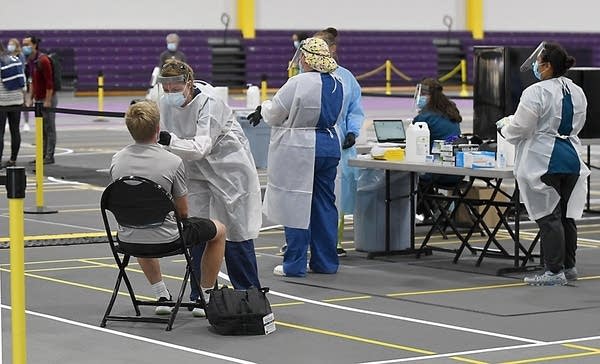
Go Deeper.
Create an account or log in to save stories.
Like this?
Thanks for liking this story! We have added it to a list of your favorite stories.
Updated: 4 p.m.
Minnesota public health leaders reacted with unease Wednesday to news that the Big Ten conference, including the University of Minnesota, will play football after all this fall and that the Minnesota State High School League is reconsidering whether to do the same.
The state’s top health officials said that while they understood the importance of youth sports, COVID-19 posed a risk to student athletes as well as to the universe of coaches, friends and families that surround players.
“We’re always concerned about things that just increase close contact with large numbers of people, given the degree of virus we know is circulating in the community,” Health Commissioner Jan Malcolm told reporters Wednesday.
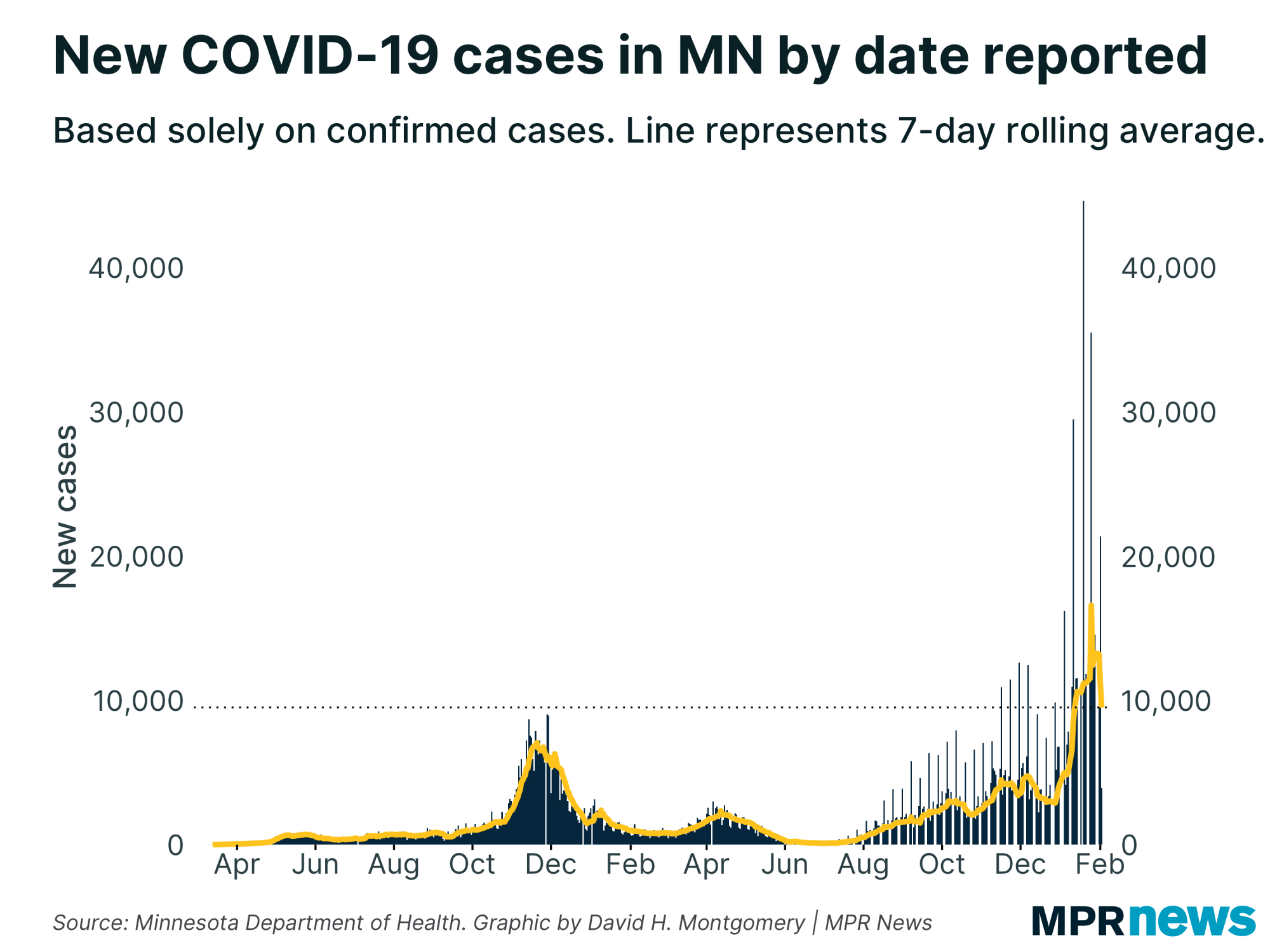
Kris Ehresmann, the state’s infectious disease director, recalled the joy of watching her kids play high school sports.
Turn Up Your Support
MPR News helps you turn down the noise and build shared understanding. Turn up your support for this public resource and keep trusted journalism accessible to all.
“I absolutely feel for the parents that feel so strongly about this,” she said, acknowledging she chokes up talking about it wearing her “mom hat.” But she added: “I recognize what we’re seeing with disease transmission, and that is really concerning.”
The state, Ehresmann said, has seen 1,452 cases of COVID-19 in Minnesota tied to sports activities in the pandemic, including nearly 900 cases in adults. Collectively, she said, that caseload has led to recommended quarantines for more than 3,300 people.
“This is not a cold,” Dr. Ruth Lynfield, the state’s epidemiologist, warned of COVID-19. “There are some people who do fine with this, but there are others, including young people, who do not do fine.”
She noted studies showing heart and other health problems linked to COVID-19 that appear to linger beyond the infection.
“We really don’t have a sense of all the things this virus can do,” she said.
The Big Ten intends to open its season Oct. 23-24. The Minnesota State High School League expects to meet on Monday to review its earlier decision to not play football and volleyball this fall, and try to play them in the spring, in the face of COVID-19.
Malcolm again implored people to wear masks, socially distance and take other measures to try to stem the spread.
Moderate case counts, hospitalizations
Malcolm’s remarks came hours after her department released the latest daily COVID-19 numbers, which continue to show a familiar recent pattern: relatively moderate case growth and hospitalizations and mostly single-digit deaths.
Wednesday’s Health Department report showed 513 new infections; 244 patients are in the hospital, with 136 needing intensive care. Those hospitalization numbers inched up from Tuesday but the overall trend is down so far in September compared to August.
Hospital patients and ICU cases are two metrics closely watched by department officials as they work to manage the spread of the disease so it doesn’t overwhelm the health care system.
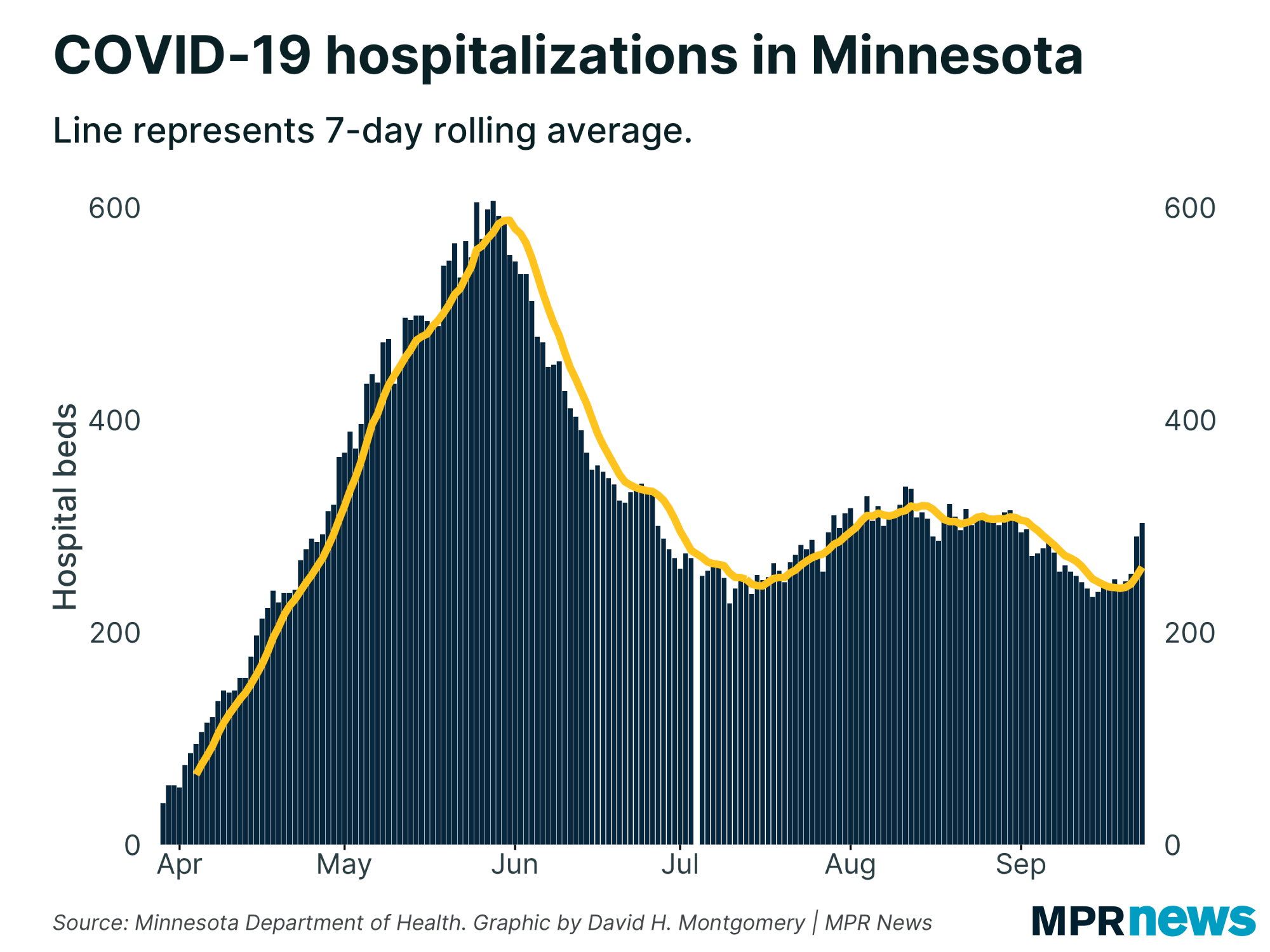
Of the 85,813 confirmed cases of the disease in the pandemic to date, about 91 percent of those identified have recovered to the point they no longer need to be isolated.
Seven more deaths reported Wednesday bring Minnesota’s toll to 1,933. Among those who’ve died, about 73 percent had been living in long-term care or assisted living facilities; nearly all had underlying health problems.
While the numbers are pretty stable right now, officials continue to caution that the level of community spread of the virus means more problems ahead.
Malcolm said the department was “watching with concern” the rapid growth in new COVID-19 confirmed cases in the states surrounding Minnesota and bracing for potential higher daily case counts from over the Labor Day weekend, when people ventured out for informal get-togethers with family and friends.
The state saw a jump in cases following the July Fourth holiday. Officials also worry about a one-two punch this fall and winter from COVID-19 and the typical flu season.
Virus ‘all over the state’
Public health authorities have warned community spread, where the origin is not precisely known, is growing in Minnesota, driven by weddings, college student meetups and other social events where people aren’t wearing masks, socially distancing or taking other precautions.
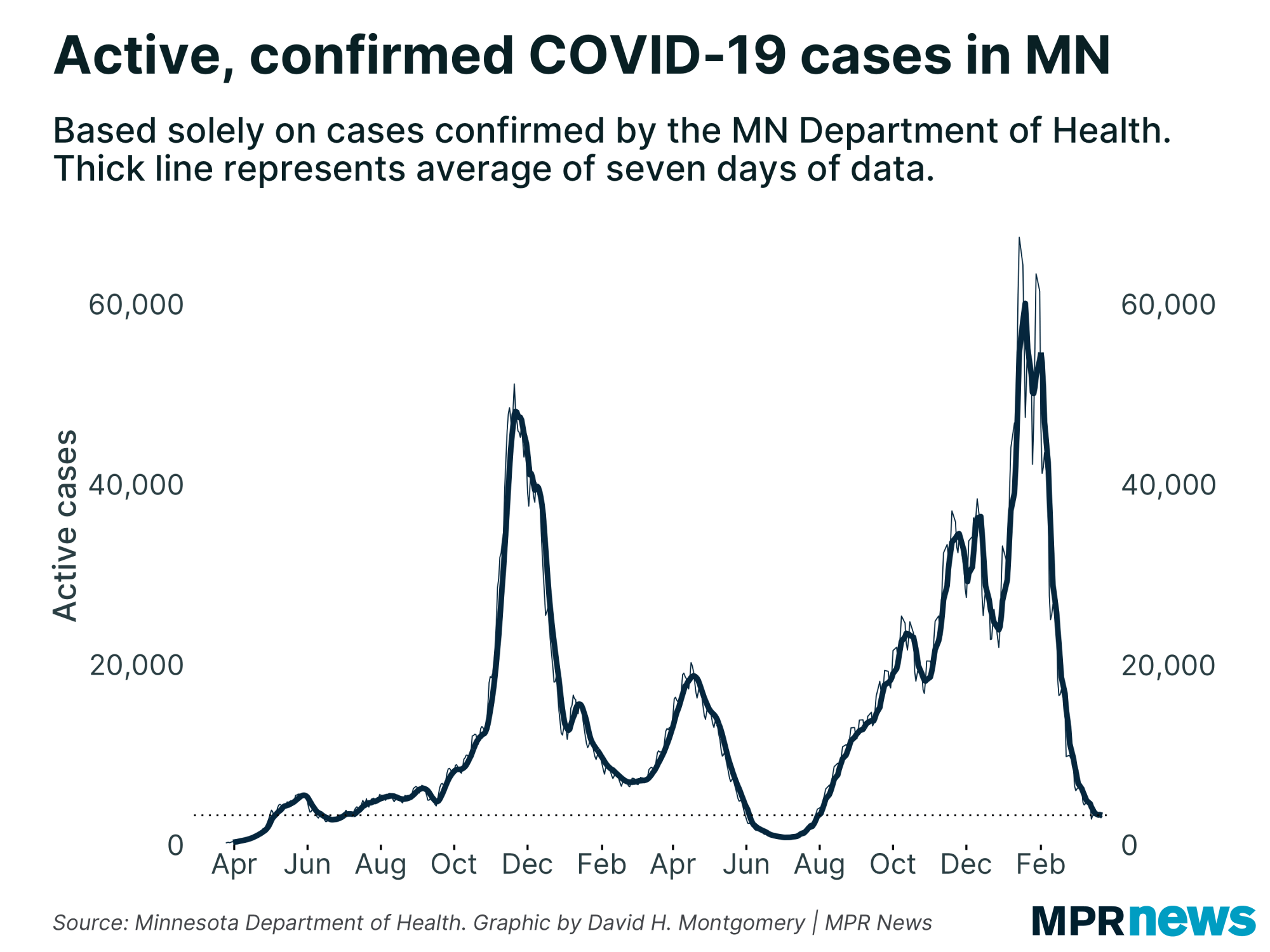
“We’re really walking on the edge of the cliff and we’re grateful that we haven’t fallen off, but we have not moved away from the edge of the cliff,” Ehresmann said Monday. “The potential for going over the edge is still there.”
With school starting, they’re also asking parents to keep sick children at home, knowing how difficult that can be for many families, especially single-parent households. They're also asking employers to be understanding.
Health Department investigators this week also going door-to-door in randomly selected neighborhoods in the Twin Cities and southeastern Minnesota as part of a statewide study to find out where COVID-19 is more prevalent.
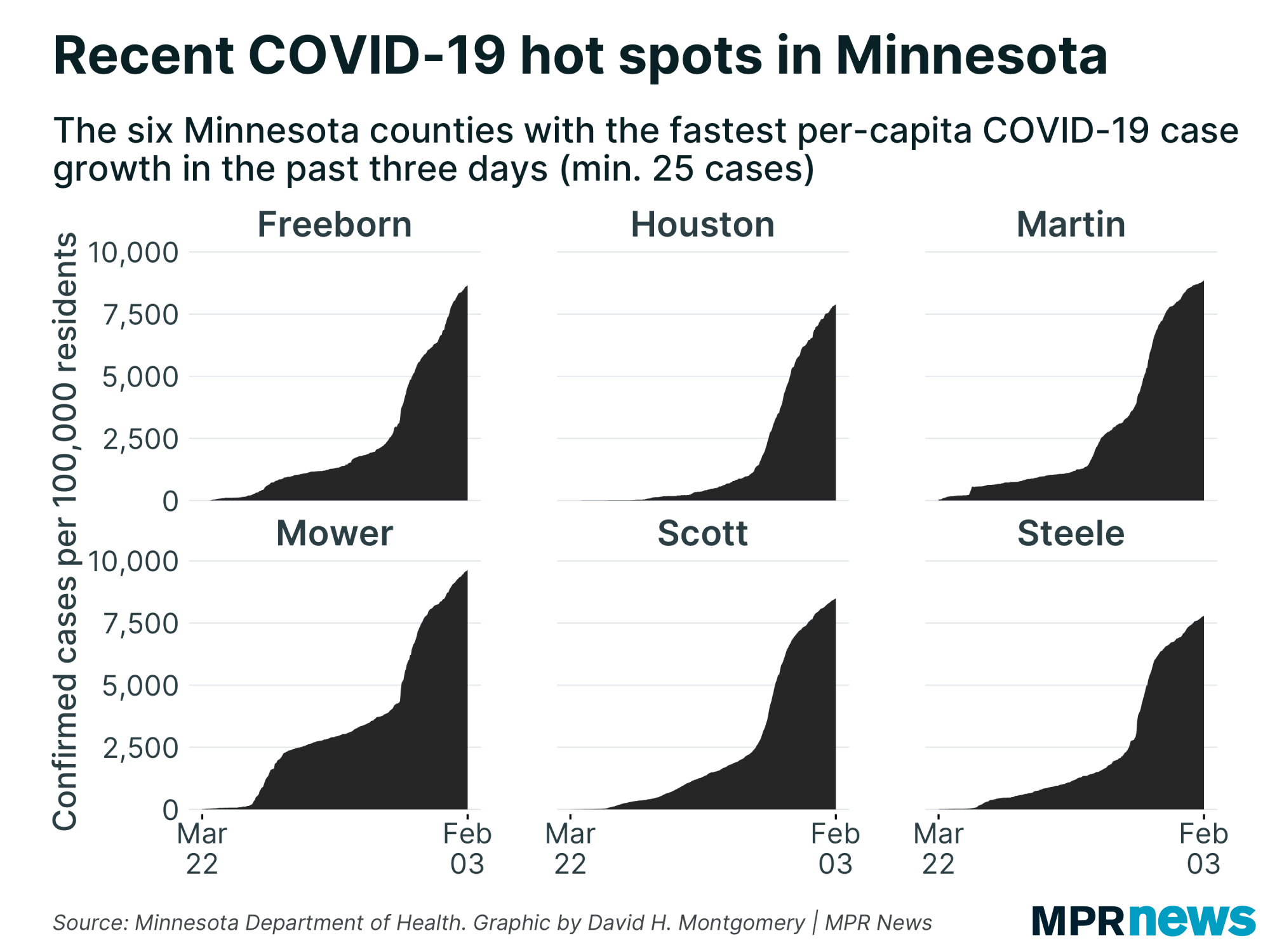
They’ll ask questions about where people spend time, whether anyone in the house has been diagnosed with COVID-19, and what information they'd like about the virus. They'll also offer free nasal swabs and serology tests.
College campus worries rise
People in their 20s make up the age bracket with the state’s largest number of confirmed cases — topping 20,000 since the pandemic began, including more than 11,500 infections among people ages 20-24.
The numbers help explain why experts remain particularly concerned about young adults as spreaders of the virus.
While less likely to feel the worst effects of the disease, experts worry youth and young adults will spread it to grandparents and other vulnerable populations and could also hamper attempts to reopen campuses completely to in-person teaching.
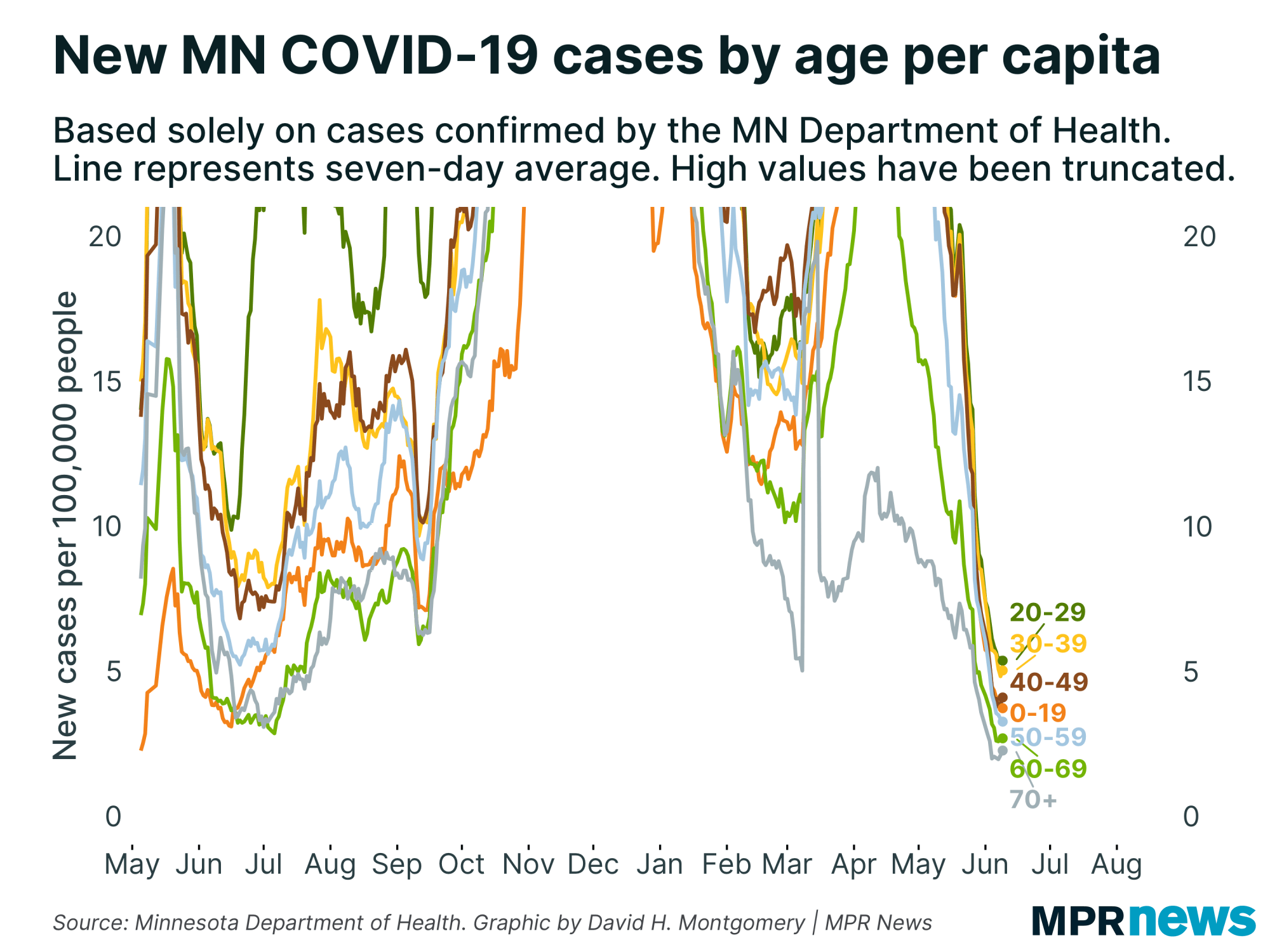
They’ve been driving the recent outbreaks, although the number of high school-age children confirmed with the disease has also grown, approaching nearly 8,000 total cases for children 15 to 19 years old since the pandemic began.
On Sunday, just across the border from Minnesota, the University of Wisconsin-La Crosse responded to rising cases by moving all in-person classes online, closing dining halls and most campus buildings, and mandating face coverings at all times on campus, indoors or outdoors.
Classes were suspended Monday and Tuesday before resuming online on Wednesday.
The move at UW-La Crosse followed a decision last week at nearby Winona State University in Minnesota to implement an immediate 14-day campus quarantine that will limit all nonessential activities on campus to slow the spread of COVID-19.
Winona State, Concordia College in Moorhead and Minnesota State University Mankato have each seen more than 100 cases tied to the schools and students in the last two weeks, Ehresmann said Monday.
Mankato is starting to see conditions improve, while it’s too early to evaluate moves made by Winona and Concordia to check the spread, she added.
Regionally, southern and central Minnesota and the Twin Cities suburbs have driven much of the increase in new cases while Hennepin and Ramsey counties show some of the slowest case growth in the state.
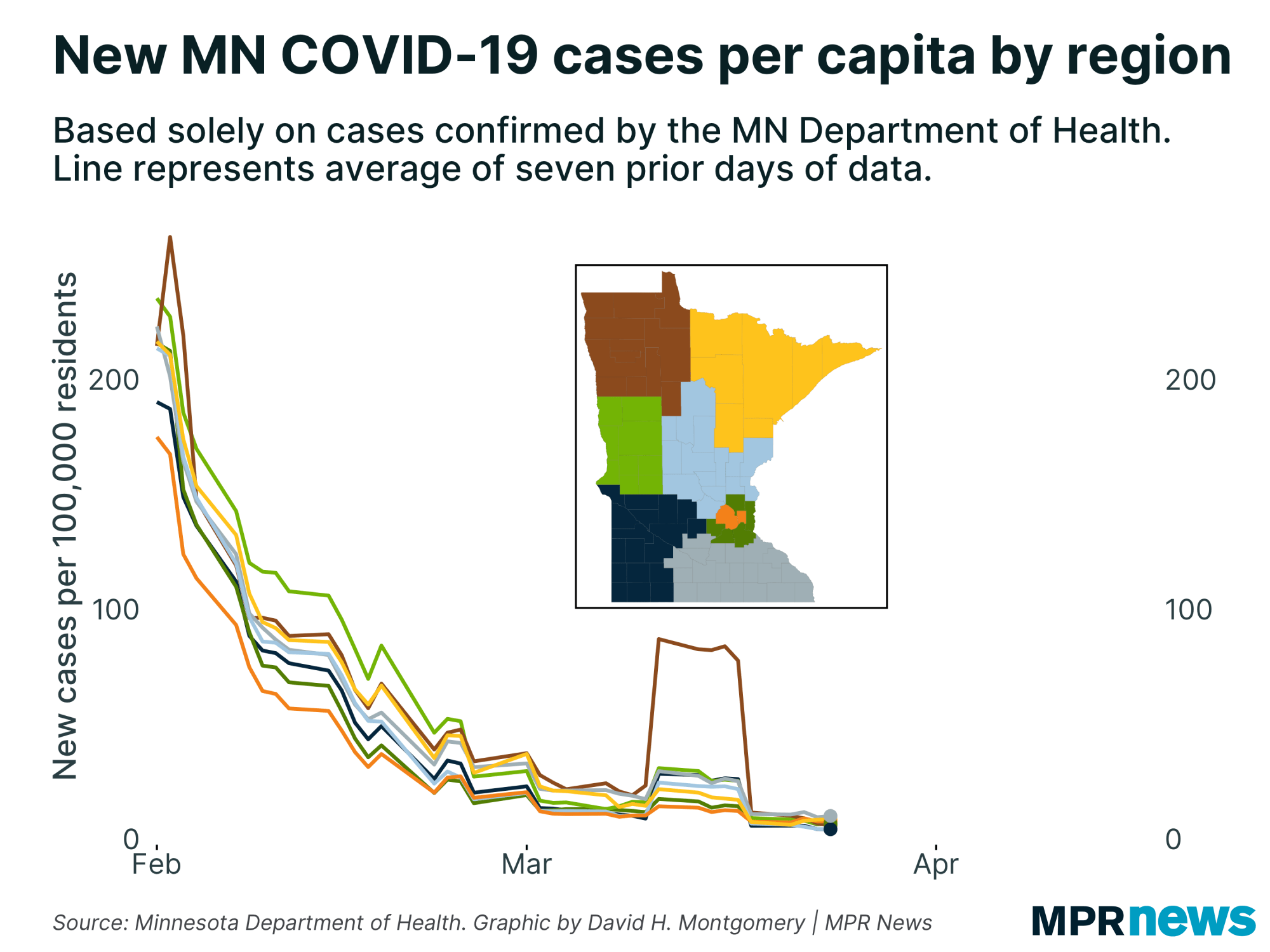
Hot spots have included southwestern Minnesota, where 75 cases have been traced to a late-August wedding in Lyon County that officials describe now as the state’s largest single social spreader event.
On Monday, Minnesota officials also confirmed an outbreak of 122 cases at the federal women’s prison in Waseca, which they said began when federal authorities transferred people into the facility from outside the state who had COVID-19.
‘Third or fourth inning’ of the pandemic?
Malcolm made it clear earlier this week that Minnesota remains in the early stages of the pandemic. In baseball terms, health leaders see Minnesota as less than half way through the game.
"We’re in the third or fourth inning" of COVID-19, Malcolm told MPR News on Monday morning.
Her views seemed to square with the head of the Centers for Disease Control and Prevention, who on Wednesday told a congressional committee that a vaccine won’t likely be widely available to the American public until late spring or early summer next year.

While the state is getting guidance on how a vaccine might be distributed, there's still a lot that's unknown.
Ehresmann said a vaccine would be supplied first to people at high risk and in health care settings; a second phase would roll out to the general population; a third phase would have it readily available to the general population.
With multiple vaccines in development, “this process will be infinitely more complex" than any other past vaccine distribution plan in Minnesota, she said.
Developments around the state
Two GOP state lawmakers call on Walz to ease up on businesses
Two Republican state lawmakers are criticizing DFL Gov. Tim Walz over his administration’s enforcement of COVID-19 restrictions.
Reps. Dave Baker, of Willmar, and Tony Jurgens, of Cottage Grove, say state inspectors are imposing stiff fines on restaurants and other hospitality businesses. They highlighted a Hastings restaurant Tuesday that is currently contesting $7,600 in fines, which were largely due to an employee removing a face mask while talking to customers.
The Busted Nut’s owner, Tatia Nelson said it was an isolated incident, and she believes the fine is excessive.
“I’m just trying to do my best as a business, and I’m trying to do everything right,” she said.
Jurgens said the stepped-up enforcement appears to be a change in the administration’s approach.
“When many of these executive orders were issued, the governor indicated that the purpose was to educate, not punish,” Jurgens said. “I believe I even remember somebody saying to hand out masks, not fines. But unfortunately, that’s not the reality.”
Baker, a former restaurant owner, called on the governor to ease up on enforcement. He also urged Walz to allow more indoor seating in restaurants before colder weather hits.
— Tim Pugmire | MPR News
Wisconsin sees surge of cases
COVID-19 cases in Wisconsin have risen by two-thirds in the past two weeks, to the state’s highest-recorded levels.
On Sunday, Wisconsin reported more than 1,550 new confirmed cases, a new record for the state. It’s also more cases than Minnesota, Iowa, North Dakota or South Dakota have ever reported in a single day. Nor is it an outlier — Wisconsin’s number of new cases has been rising for two weeks, while its number of new tests has remained flat.
Adjusted for population, Wisconsin is averaging more than 200 new cases per million residents, twice as high as Minnesota. Though a record for Wisconsin, Iowa and both Dakotas saw significantly higher rates in late August. Since late August, Iowa and South Dakota have seen their cases fall, while North Dakota continues to report high numbers of new cases per capita.
— David H. Montgomery | MPR News
Top headlines
Doctor’s COVID-19 videos offer calm in the pandemic storm: A rural Minnesota doctor gained an online following with his self-made videos sharing facts and advice about the coronavirus. Then, he shared news of his own diagnosis.
Zach! Zak! Zack! U's newest student club pledges humor, hope during pandemic: COVID-19 has made it tough to build community on college campuses. A University of Minnesota student started a new group to help with that. The only qualification to join? Your name must be Zach (alternative spellings grudgingly accepted).
U of M students move in, and test the latest COVID-19 measures: In addition to pushing back move-in day, the university instituted a strict, four-step process for students who live in dorms on the Twin Cities, Duluth and Rochester campuses. First, they’ll spend at least 10 days living and learning almost exclusively inside the residence halls and are told not to visit other dorms, businesses or off-campus residences. For nearly a month, they’ll have a 9 p.m. curfew.
COVID-19 in Minnesota
Data in these graphs are based on the Minnesota Department of Health's cumulative totals released at 11 a.m. daily. You can find more detailed statistics on COVID-19 at the Health Department website.


